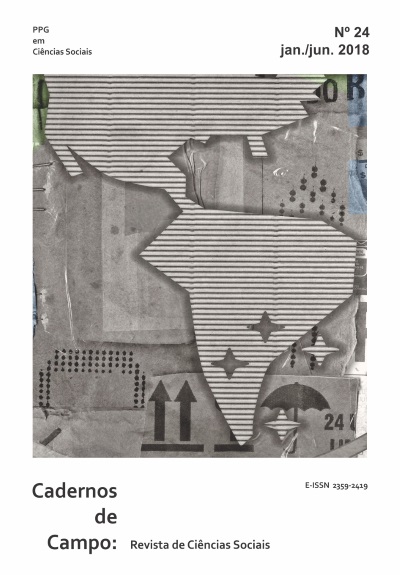Development strategies and the Brazilian’s new-developmentalist school abstract
Keywords:
Structural Change, New-Developmentalism, Real Exchange Rate,Abstract
This paper aims to present different strategies of economic development mapped in Rodrik’s (2013a) seminal work and correlate them with central propositions of the Brazilian’s New Developmentalist School. According to Rodrik, it is possible to outline at least two development strategies from current literature about economic growth. One consists of human capital accumulation and social capabilities, which would allow an increase of potential productivity in the service sector and, consequently, a gradual increase in the productivity of the economy as a whole. This strategy is based, therefore, on the construction and development of “good institutions” in line with the thesis presented in Acemoglu’s and Robinson’s work (2012). Another strategy consists of economic structural transformation, with the transference of productive resources and labor force in the traditional sector or subsistence to the manufacturing sector. This strategy allows an accelerated growth in labor productivity due to the “special” nature of the transformation industry, which consists in being the only sector of activity that is subject to positive overflow effects from the technological frontier. In order for the industrialization effect on development to last, however, is necessary to adopt the so-called “neo-mercantilist” policies (RODRIK, 2013c); which induce an increase in the labor force participation in the total labor through mechanism – for instance, the maintenance of a competitive exchange rate – generate a surplus in the trade balance of the manufacturing sector. This second development strategy is in accordance with central propositions of the New- Developmentalist School, presented in Bresser-Pereira’s, Oreiro’s and Marconi’s (2016) work. In this context, the main issue for viability analysis of the development strategy proclaimed by the new-developementalists concerns the capacity of using the real exchange rate as economic political instrument. Contrary to what orthodox economists think, the real exchange rate can be seen as exogenous variable, being under control of economic policymakers. The main challenge for adoption of this strategy consists of convincing the workers and political parties that represent them that the reduction in the real wage level resulting from the exchange rate devaluation will be largely offset in the future due to the acceleration of labor productivity growth and, consequently, real wages.
Downloads
References
ACEMOGLU, D; ROBINSON, J. Why Nations Fail. New York: Crown Publishers, 2012.
ARIDA, P. Ainda a conversibilidade. Revista de Economia Política, São Paulo, v. 23, n.3, 2003a.
ARIDA, P. Por uma moeda parcialmente conversível. Revista de Economia Política, São Paulo, v.23, n.3, 2003b.
BACHA, E. Reflexões pós-cepalinas sobre inflação e crise externa. Revista de Economia Política, São Paulo, v.23, n.3, 2003.
BONELI, R; BACHA, E. O crescimento brasileiro revisitado. In: VELOSO, F. et al. (Org.). Desenvolvimento Econômico: uma perspectiva brasileira. Rio de Janeiro: Elsevier, 2013. p.55-80.
BRESSER-PEREIRA, L.C. Globalização e Competição. Rio de Janeiro: Elsevier, 2009.
BRESSER-PEREIRA, L.C.; OREIRO, J. L; MARCONI, N. Macroeconomia
Desenvolvimentista: Teoria e Política Econômica do Novo Desenvolvimentismo. Rio de Janeiro: Elsevier, 2016.
CARVALHO, F.C. Financial Flows and New Developmentalism. Revista de
Economia Política, São Paulo, v.38, n.1, 2018.
DORNBUSCH, R.; FISCHER, S.; STARTZ, R. Macroeconomia. São Paulo:
AMGH Editora, 2011.
FLASSBACK, H. Germany´s Trade Surplus: Causes and Effects. American Affairs, Denville, v.1, n.3, 2017.
GABRIEL, L. F.; OREIRO, J. L. C.; JAYME JUNIOR, F. G. A North-South Model of Economic Growth, Technological Gap, Structural Change and Real Exchange Rate. Structural Change and Economic Dynamics, Londres, v. 38, p. 83-94, 2016.
LEWIS, W.A. Economic Development with Unlimited Supplies of Labour. The Manchester School, Manchester, v. 22, n.2, p.139-191, 1954.
KALDOR, N. Marginal Productivity and the Macro-Economic Theories of
Distribution: comment on Samuelson and Modigliani. Review of Economic Studies, Londres, v.33, n.4, p.309-319, 1966.
MARCONI, N.; ROCHA, M. Desindustrialização precoce e sobrevalorização da taxa de câmbio. Texto para Discussão, Rio de Janeiro, n.1681, 2011.
MADDISON, A. Ultimate and Proximate Growth Causality: a critique to Mancur Olson on the Rise and Decline of Nations. Scandinavian Economic History Review, Estocolmo, n.2, 1988.
MISSIO, F. et al. Real Exchange Rate and Economic Growth: New Empirical Evidence. Metroeconomica, Viena, v.66, p.686-714, 2015.
OREIRO, J. L. Macroeconomia do Desenvolvimento: uma perspectiva Keynesiana. Rio de Janeiro: LTC, 2016.
OREIRO, J. L.; D’AGOSTINI, L.M. Macroeconomic Policy Regimes, Real
Exchange Rate Overvaluation and Performance of the Brazilian Economy. Journal of Post Keynesian Economics, Aldershot, v.40, p.27-42, 2017.
OREIRO, J. L.; D’AGOSTINI, L.M. Terms of Trade, Real Exchange Rate OverValuation and De-industrialization: Theory and Empirical Evidence on Brazilian Case (2003-2015). In: INTERNATIONAL CONFERENCE DEVELOPMENTS IN ECONOMIC THEORY AND POLICY, 13., Bilbao. Proceedings… Bilbao: University of Basque Country, 2016.
OREIRO, J.L; FEIJÓ, C. Desindustrialização: conceituação, causas, efeitos e o caso brasileiro. Revista de Economia Política, São Paulo, v.30, n.2, 2010.
OREIRO, J.L; MARCONI, N. O Novo-Desenvolvimentismo e seus críticos. Revista Cadernos do Desenvolvimento, Rio de Janeiro, v.11, n.19, p.167 179, 2016.
OREIRO, J.L.; SILVA, G.J. Evidências Empíricas Recentes da Relação entre a Taxa de Câmbio Real Efetiva e a Poupança Privada no Brasil (2000-2016). Nota Técnica, 2017. Disponível em:<http://joseluisoreiro.com.br/site/link/ff76f63b013442d0aac4da3684c9215507e32d7.pdf>. Acesso em: 1 out. 2018.
OREIRO, J.L; PUNZO, L; ARAÚJO, E. Macroeconomic Constraints to Growth of Brazilian Economy: Diagnosis and some policy proposals. Cambridge Journal of Economics, Cambridge, v.36, p.919-939, 2012.
PALMA, G. Quatro fontes de desindustrialização e um novo conceito de
doença holandesa. In: CONFERÊNCIA DE INDUSTRIALIZAÇÃO, DESINDUSTRIALIZAÇÃO E DESENVOLVIMENTO, São Paulo. Anais... São Paulo: FIESP: IEDI, ago. 2005. Disponível em <https://macrododesenvolvimento.files.wordpress.com/2013/06/520-20quatro20fontes20_2_.pdf>. Acesso em: 1 out. 2018.
ROCHA, M.; MARCONI, N. Substituição de Poupança Interna por Externa e Sobre-Apreciações da Taxa de Câmbio. Texto para Discussão, n.1870, Brasília, 2013.
RODRIK, D. The Past, Present and Future of Economic Growth. Global Citizen Foundation, Working Paper 1, 2013a.
RODRIK, D. Unconditional Convergence in Manufacturing. Quarterly Journal of Economics, Cambridge, MA, v.128, n.1, p.165-204, 2013b.
RODRIK, D. The New Mercantilist Challenge. Project Syndicate, 9 Jan. 2013c.
RODRIK, D. The Real Exchange Rate and Economic Growth. Brookings papers on economic activity, Washington, n.2, Fall 2008.
ROS, J. Rethinking Economic Development, Growth and Institutions. Oxford: Oxford University Press, 2013.
ROS, J. Development Theory and the Economics of Growth. Michigan: The University of Michigan Press, 2001.
ROWTHORN, R.; RAMASWANY, R. Growth, Trade and Deindustrialization. IMF Staff Papers, Washington, v.46, n.1, 1999.
TEIXEIRA DA CUNHA, R.G. Causas próximas e ultimas. Correio da Cidadania, São Caetano do Sul, 21 fev. 2008. Disponível em <http://correiocidadania.com.br/index.phpoption=com_content&view=article&id=1453:ambcid210208&catid=28:ambiente-e cidadania&Itemid=57>. Acesso em: 1 out. 2018.
VALOR ECONÔMICO. 72% do dinheiro captado pelos bancos financia o setor público. 18 abr. 2018. Disponível em:<https://www.valor.com.br/brasil/5462033/72-do-dinheiro-captadopelos-bancos-financia-o-setor-publico>. Acesso em: 1 out. 2018.









